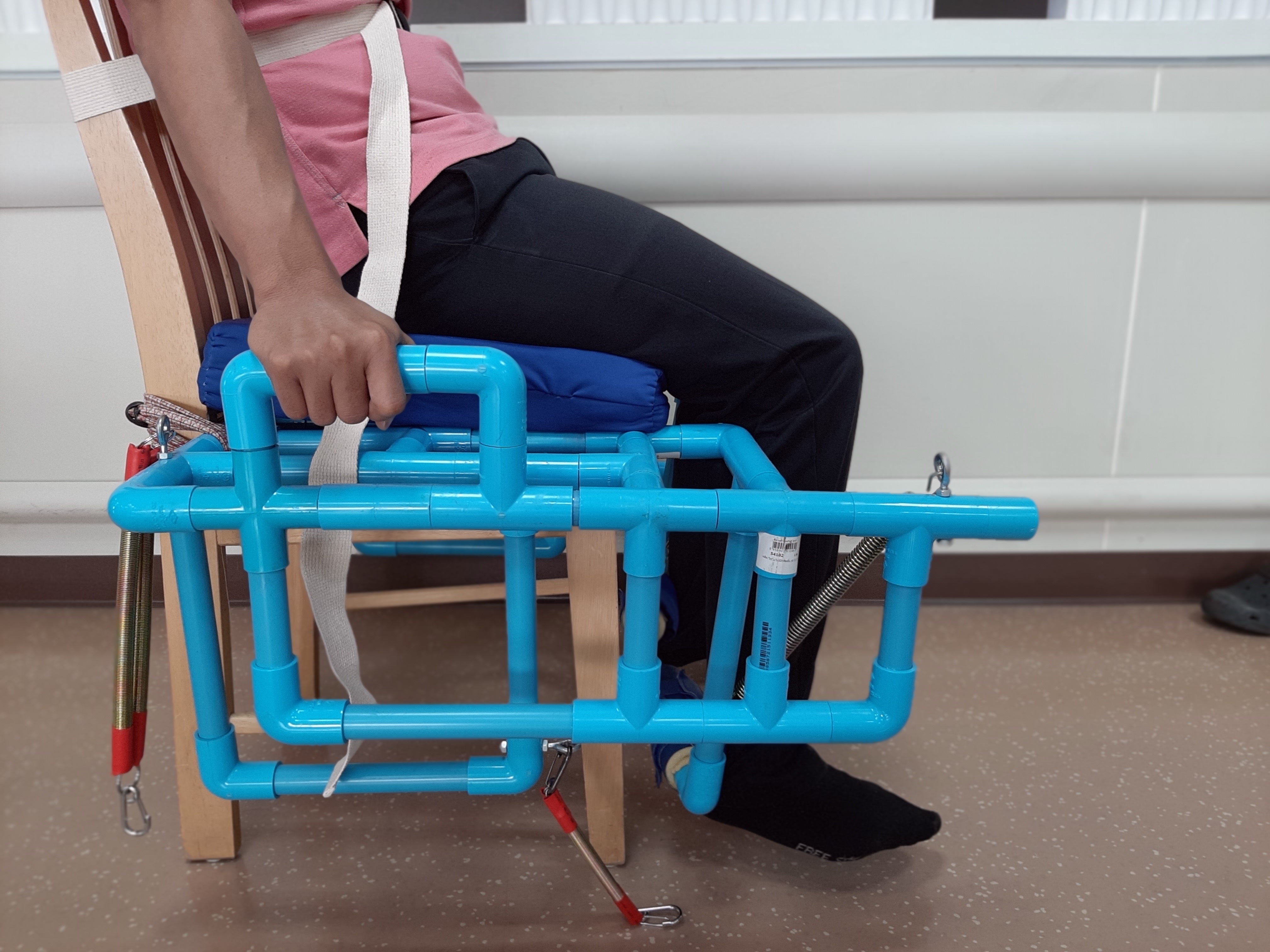Rehab Pipe: The Innovation of the Equipment to Increase Muscle Strength in Flexion and Extension of Elbow and Knee Muscle for the Patients with Muscle Weakness
Main Article Content
Abstract
Muscle weakness is a problem affecting mobility and the ability to perform daily activities. The progressive resistive exercise is one of the most successful muscle strengthening methods. This article presents the idea of developing an innovation called “Rehab pipe”, the prototype exercise equipment developed from a local innovation. The “Rehab pipe” aims to increase muscle strength of elbow and knee flexor, as well as extensor muscle groups. This, contributes to the development of muscle functions used for daily tasks and to the improvement quality of life as a whole. However, the effectiveness of this equipment could also be investigated in further research to reassure that it can increase muscle strength when applied to different communities.
Article Details
References
2. Saguil A. Evaluation of the patient with muscle weakness. American family physician. 2005;71(7):1327-36.
3. Powers SK, Lynch GS, Murphy KT, Reid MB, Zijdewind I. Disease-induced skeletal muscle atrophy and fatigue. Medicine and science in sports and exercise. 2016;48(11):2307.
4.Harding M. Muscle weakness. [Internet]. 2016 [update: 2016 Oct; cited 2021 Jan 29]. Available from:
https://patient.info/signs-symptoms/tiredness-fatigue/muscle-weakness#:~:text=Muscle%20weakness%20is%20commonly%20due,chronic%20fatigue%20syndrome%20(ME).
5.Wist S, Clivaz J, Sattelmayer M. Muscle strengthening for hemiparesis after stroke: A meta-analysis. Annals of Physical and Rehabilitation Medicine. 2016;59(2):114-24.
6.บุญรัตน์ โง้วตระกูล, เสรี ชัดแช้ม, ปรัชญา แก้วแก่น. การเพิ่มความแข็งแรงของกล้ามเนื้อขาและ ความเร็วในการลุกขึ้นยืนโดยใช้โปรแกรมควบคุมจินตภาพการเคลื่อนไหวร่วมกับการออกกำลัง กายในผู้สูงอายุ: การศึกษาคลื่นไฟฟ้าสมอง. Research Methodology and Cognitive Science. 2018;15(2):53-68.
7.Garber CE, Blissmer B, Deschenes MR, Franklin BA, Lamonte MJ, Lee IM, Nieman DC, Swain DP. Quantity and quality of exercise for developing and maintaining cardiorespiratory, musculoskeletal, and neuromotor fitness in apparently healthy adults: guidance for prescribing exercise. 2011;1334-59.
8.Borst SE. Interventions for sarcopenia and muscle weakness in older people. Age and ageing. 2004;33(6):548-55.
9.Carraro U, Gava K, Baba A, Piccione F, Marcante A. Fighting muscle weakness in advanced aging by take-home strategies: Safe anti-aging full-body in-bed gym and functional electrical stimulation (FES) for mobility compromised elderly people. Biol Eng Med. 2016;1:1-4.
10.Jakicic JM, Wing RR, Butler BA, Jeffery RW. The relationship between presence of exercise equipment in the home and physical activity level. American Journal of Health Promotion. 1997;11(5):363-5.
11.Conable KM, Rosner AL. A narrative review of manual muscle testing and implications for muscle testing research. Journal of chiropractic medicine. 2011;10(3):157-65.
12.Terence J, Peter Langhome, David J. Barthel Index for Stroke Trials Development, Properties, and Application. Stroke. 2011;42:1146–51.






